Michael Laub / Remote Control Productions
Death, Dance and Some Talk (2010)
PHOTOGRAPHY / CREDITS / PRESS / TRAILER
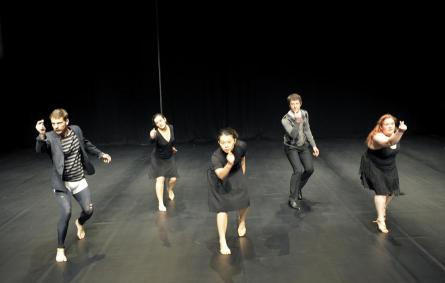
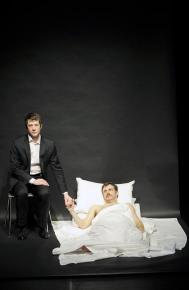
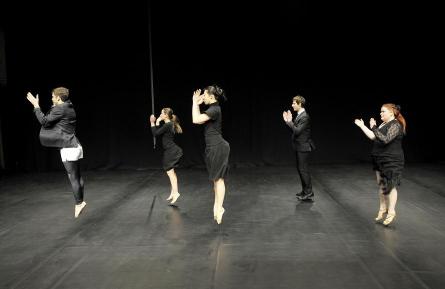
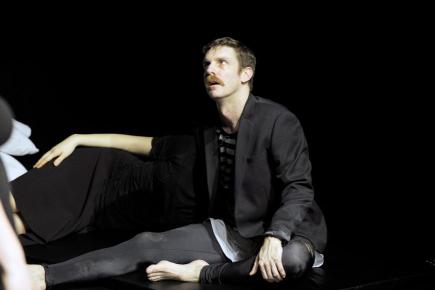
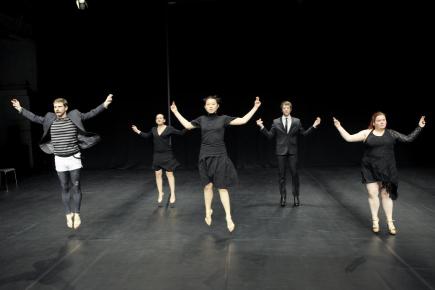
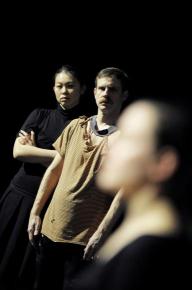
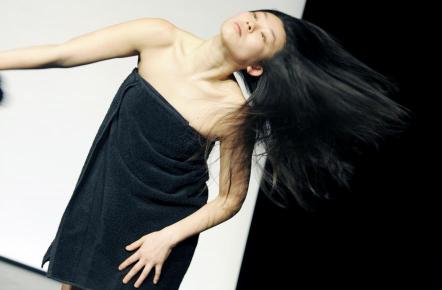
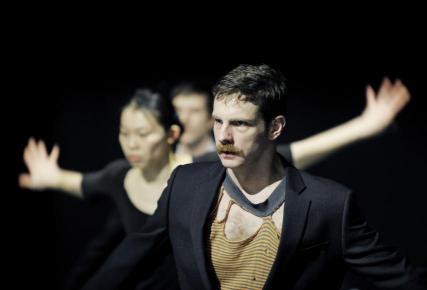
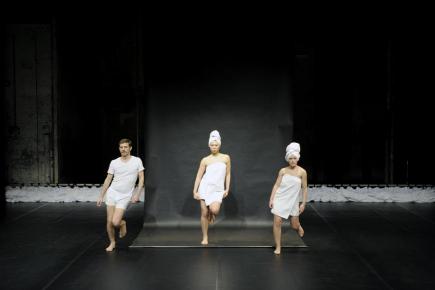
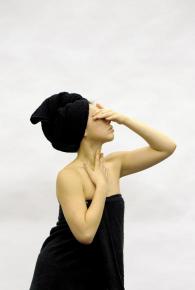
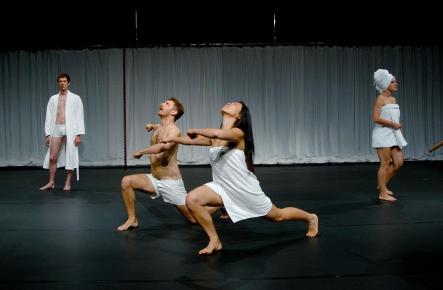
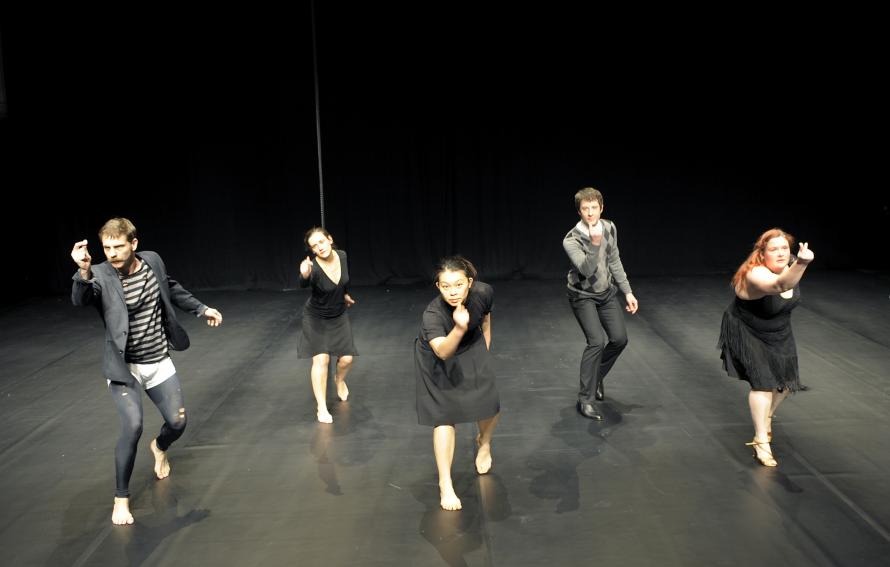
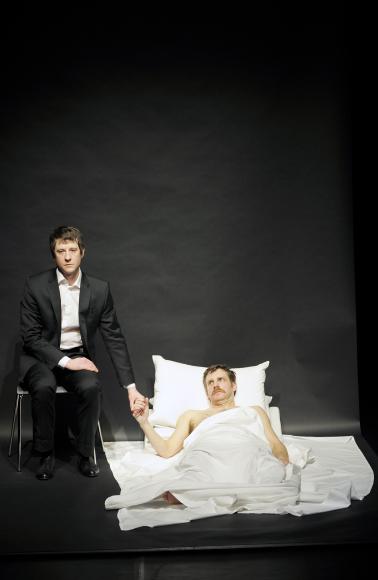
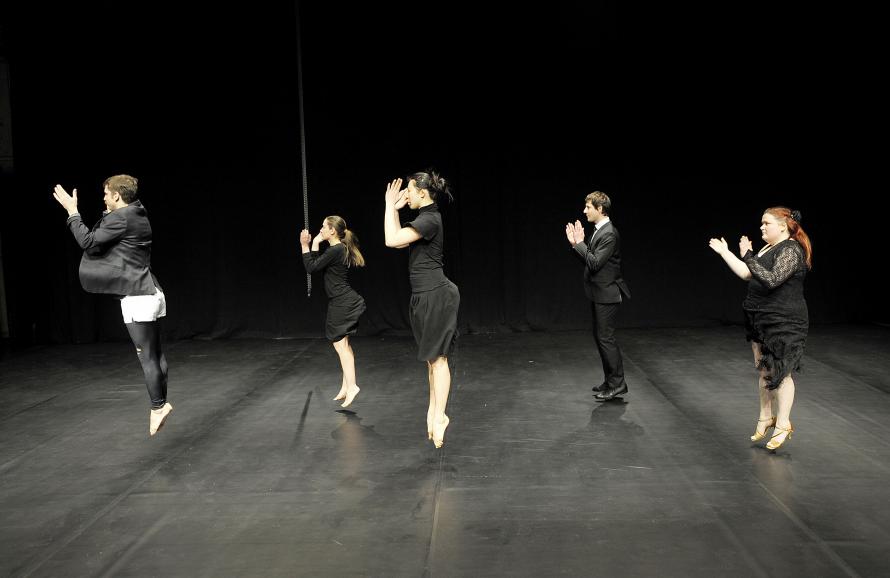
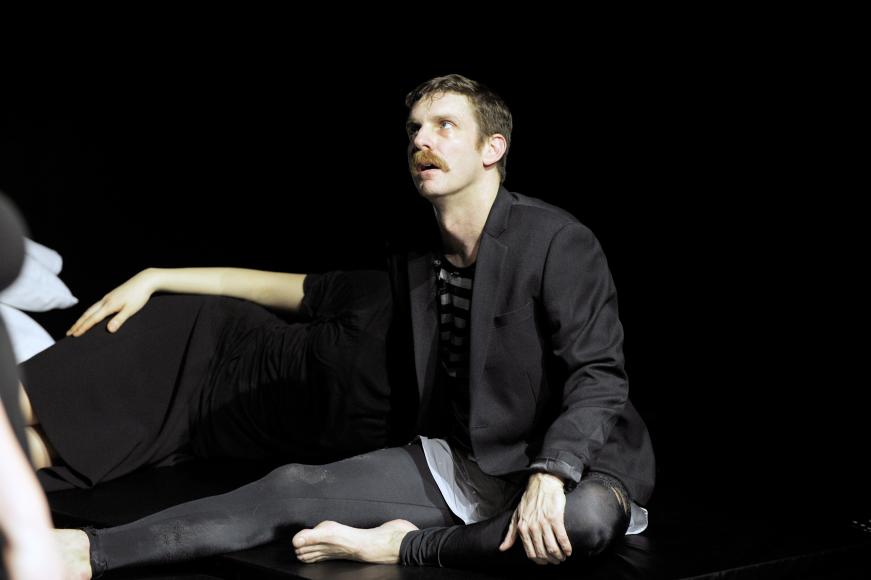
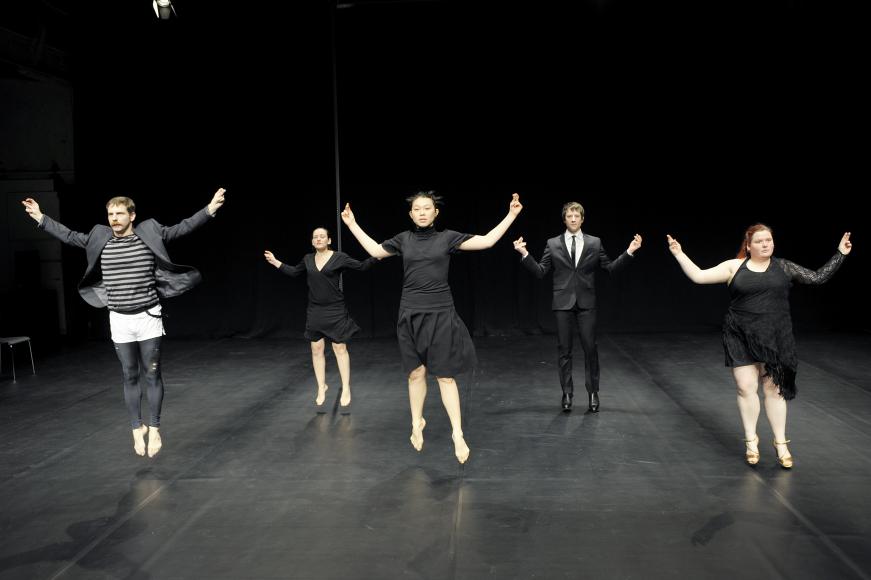
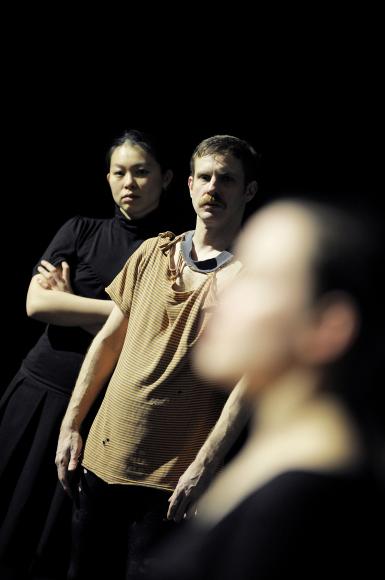
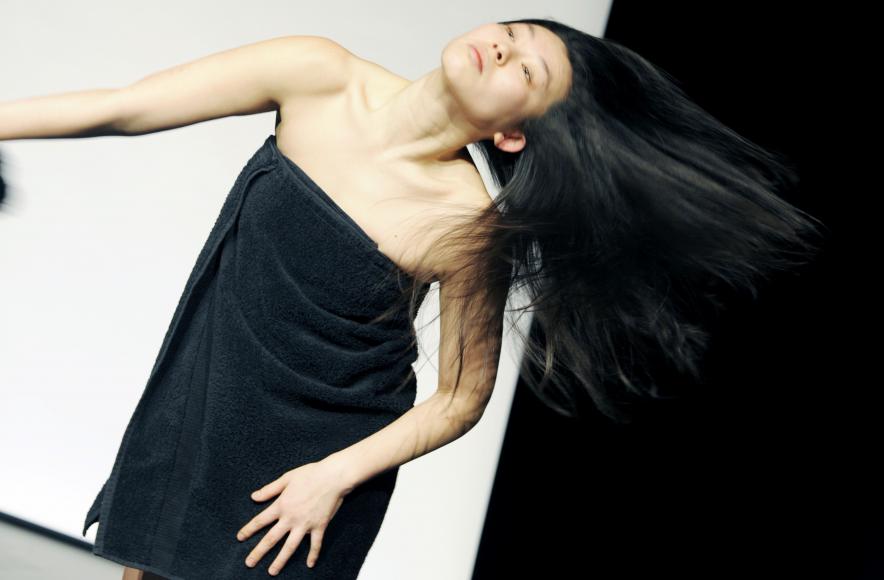
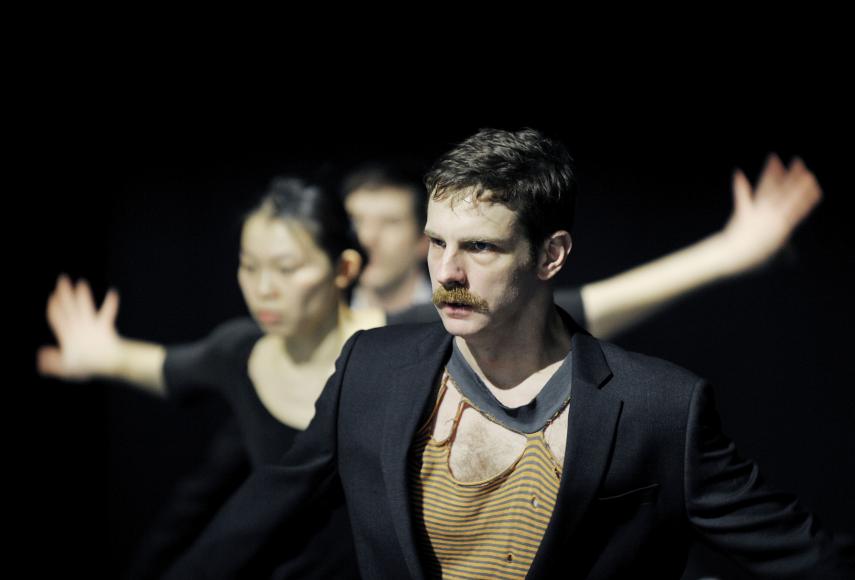
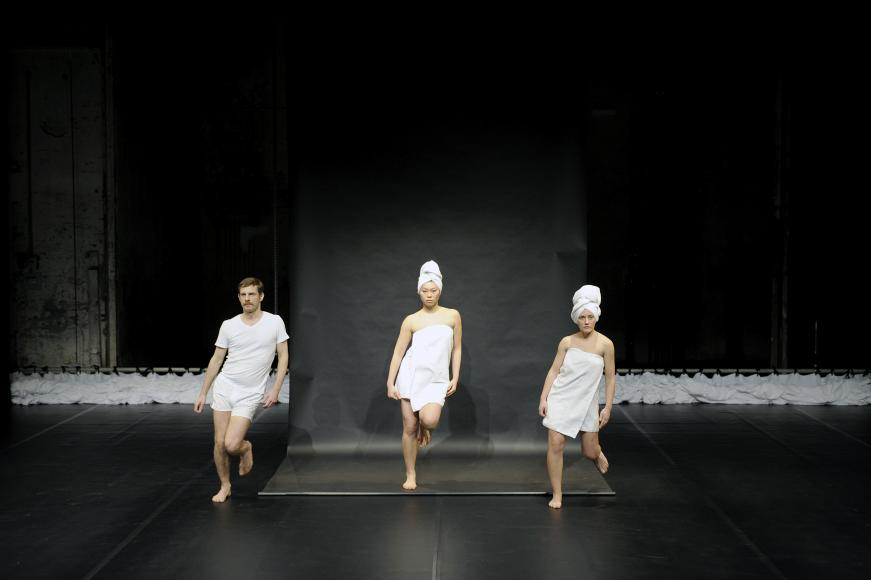


"The expression 'wet blanket', which means you're killjoy or party pooper, comes from a tragedy that happened in the ballet world. Emma Livry, the last of the romantic ballerinas, refused to have her tutu treated with fire retardent and it caught fire from one of the gas lamps on stage. She died from the burns. After that they kept wet blankets just off stage in case any other ballerinas caught fire."(Greg Zuccolo)
CREDITS
Conceived and directed by Michael Laub
Choreography Greg Zuccolo and Michael Laub
Music Larry Steinbachek
Light Design Nigel Edwards
Sound Stephan Wöhrmann
Technical Director Jochen Massar
Costumes Olaf Carlshon
Assistant Director Thomas Schütt
Subtitles Marold Langer-Philippsen
Translation Thomas Rach
Executive Production Management Sven Neumann
Production Management Inge Zysk
Management Michael Laub/Remote Control Productions Claudine Profitlich
Performers Astrid Endruweit, Robert Gather, Herma Auguste Wittstock, Greg Zuccolo, I-chen Zuffellato
Co-production Remote Control Productions and Sophiensäle
Supported by Hauptstadtkulturfonds
With many thanks to Berlin Poche
PRESS
Tom Mustroph, Zitty, 4/2010
The Wild Man Mellows
Michael Laub, known for his frenzied productions, discovers softer tones.
Michael Laub has collected tales of death. The story of a butoh dancer suspended from a height who crashed down to his death. Of a ballerina who steadfastly refused to dowse her tutu in fire retardant then went up in flames. Of a Taiwanese grandmother whose mourning relatives fly home from cities around the globe to find her laid out next door to an electronics outlet, Japanese porn films running on the screens in the window. The tales, all true, were contributed by the members of Laub’s five-strong ensemble during the rehearsals of “Death, Dance and Some Talk”. Now they belong to the piece.
Michael Laub was the creator of “Frankula”, a Frankenstein’s bride equally infused by the spirit of Dracula. The choreographer’s “Planet Lulu” presented an international, five-fold version of Wedekind’s notorious vamp. His Bollywood-Goethe extravaganza “Total Masala Slammer” was a delirious cocktail of dance, drama and romance. Those expecting another frenzied freak show will not be disappointed. Laub feels close to figures that most of the audience would dismiss as outsiders: “It’s much more difficult to be normal,” he says. “To assert normality every moment of the day, that is, and to reinforce it at the same time.” Suddenly, an almost pained expression appears on the gaunt, lined face that, in combination with the head of black curls, adds something ethereal to the hard-rock pioneer look. However, something is different about the new piece. “Death, Dance and Some Talk” is less frenzied, less overwrought, than earlier productions. A mood of questioning and recollection surrounds those who are seen to die. However, the emotion is ruptured before pensiveness can take hold of the performers, Laub and the audience. Greg Zuccol
o cold-bloodedly shoots the Butoh storyteller Astrid Endruweit. She wraps her arms round I-Chen Zuffellato, who was recounting the death of her grandmother, and the two women burst into wailing, histrionic tears that immediately establish distance – to the mounting emotions, to the performers, to one’s own self.
The high-wire act of “Death, Dance and Some Talk” maintains an equilibrium between irony and comedy, solemnity and emotionality. “A recent spate of deaths among people I knew gave me the idea for this production,” says the choreographer who has always juggled dance with theatre. The immediacy of the theme of death, its strength and power, is such that Laub, who was born in Belgium in 1953, was willing, for the first time in fifteen years, to risk an unscripted production, that is to say, to forego the security of a preordained route. At the same time, he admits, he was beset with anxiety that he might fail to do justice to his complex subject matter. In order to convey the intricacy of the web of thoughts and feelings spun by death, he loops, cascades and interlocks the sequences of dance, music and video. And the process is accompanied by his doubts about the success of his methods. This hesitancy makes him likeable – after all, what kind of person would claim mastery over death?
After venturing into new territory with his choreographic portraits of recent years, Laub is now returning to his familiar environment – and seems miraculously transformed in the process.
Wiebke Hüster, Frankfurter Allgemeine Zeitung, 27 February 2010
Dance With Me, Little Skeleton
Danse macabre: premiere of “Death, Dance and Some Talk“ by Michael Laub at Sophiensäle, Berlin
Truth or lies? The question is in the viewer’s mind throughout Michael Laub’s wonderfully comic and grisly new piece “Death, Dance and Some Talk”, a musical black comedy about mortality and dance, about talking, shooting and expiring. And if he did make up stories of that kind, was he entitled to do so? Tales of dead grandmothers in Taiwan, for instance, whose jittery, overtired granddaughters end up watching Japanese porn films while keeping the death-watch. The scenes, dances and anecdotes brought together by Belgian director-choreographer Michael Laub are inspired by various sources – private, historical and aesthetic. While his five dancers recount tales of dying, of death and the dead, the audience is asked to believe they’re talking from experience. These occasionally crude stories may be true; equally, they may just be well crafted. Take the dancer I-Chen Zuffellato and her dead grandma. On hearing of the old lady’s demise, the entire family immediately flew back to China – she giggles before correcting her blunder: “Taiwan!” Finding their grandmother laid out on the floor of a “Panasonic Shop”, I-Chen says, she and her sister spent part of the wake watching Japanese porn. She imitates a few of the leading lady’s Japanese utterances. Michael Laub is very fond of stories of that type, episodes that would not be out of place in a Coen brothers movie. Strange, embarrassing moments; unexpected and inappropriate reactions from people in states of emotional extremity.
Even the historically authenticated tale of a gruesome on-stage death – that of a nineteenth-century ballerina whose tutu was set on fire by gas lamps – occasions frivolous remarks. Ever since Emma Livry died that frightful death, we are told, theatres have kept wet towels on hand in the wings; hence the expression “wet blanket”. These macabre tales exert a fascination of their own, but Laub’s pacing leaves the audience little time to ponder. Before you know it, the piece has moved on to the next insanely comic performance, for instance the butoh portrayal of the sprouting, blossoming and (of course) death of a plant. Astrid Endruweit is heart-rending in this role, the finest of her cameos. Which is not to belittle her other butoh depiction, namely the victim of a neutron bomb. She keeps her hands held out in front of her (due, she later explains, to the fact that skin is dangling from them in shreds).
Herma Auguste Wittstock, a Rubenesque beauty who boasts a flawless porcelain complexion and outstanding prowess in Latin dance styles, offers a death-rattled account of Molière’s last breaths, surrounded by the death-dancers of his last ballet. Roberth Gather is the sardonic, aloof and mysterious man with his finger on the music controls, Greg Zuccolo pulls the choreographic strings for these dancing zombies racked by memento-mori melancholia and murderous desires. In their undead state, they are good for little more than finger-snapping, head-and-knee-wobbling routines, which recur mechanically with music-clip precision.
If for that reason the show might be termed a minor event in choreographic terms, then one must add that it is minor in divine fashion: inspired, nasty, fearless, delivered by remarkable character actors with faces never to be forgotten. The final “skeleton dance” from “The Wizard of Oz” was the audience favourite number in this revue about the death of dance-theatre. Zuccolo claims he learned the motions at elementary school: spread the arms out to the side, let the forearms dangle at right angles, then begin to oscillate to and fro. This meeting between Grim Reaper and Clown is a disturbing sight – an unsettling, memorable image of the contemporary dancer.
Laub once confessed that all his ideas came from television. In combination with his other obsessions – ballerinas, serial killers and fashion designers – that all sounds highly idiosyncratic. But the opposite is true: when Laub gets down to work, he lays bare our world in all its absurdity, our odd inhibitions, our unseemly shame and embarrassing shamelessness. He strips off our layers of over-thick skin then shows us how to rattle our bones and kill ourselves laughing. No other comedian of the dance could offer us anything like as much.
Arnd Wesemann, Kultiversum, 24.02.2010
Death Is A Punch Line
Berlin, 23.02.10: “Death, Dance and Some Talk” by choreographer Michael Laub in the Sophiensaele, Berlin.
Fifteen years ago, his dancers stood on the stage wrapped in white bath towels. The piece was titled “Rough”, a raw drama about theatre that asked how, if at all, stories could still be told on the stage. Now, on the stage of the Sophiensaele in Berlin, Michael Laub’s dancers are back in their towels. “Death, Dance and Some Talk” is the title of this drama about dance that asks how, if at all, stories can still be told over dance. Why is there so much dying in any narrative ballet worth its salt? What is conveyed by butoh, that dance of the atom bomb, with its gestures suggesting flakes of skin are about to drop off the hands, movements evoking a scorched victim who pads his way to the cooling beach only to find that the sea is on fire. Butoh is uninhibited dying .
Astrid Endruweit’s incarnation of the above scenario is terrific: eyes aghast, she sinks to the floor. A bullet fired from Greg Zuccolo’s pointed finger puts her out of her misery. Both dancers have belonged to Michael Laub’s crew for about a decade; in 2004, they were each the subject of what Laub termed a “self-portrait”. These quasi-autobiographical dancer’s profiles preluded Laub’s subsequent, and on-going, “Portrait Series”. The series opened in 2007 with a cast identical to this evening’s: Astrid Endruweit and Greg Zuccolo alongside Robert Gather, the heavyweight performer Herma Auguste Wittstock, and the Taiwanese dancer I-Chen Zuffellato.
Just as they did three years ago, Laub’s performers appear in front of a curtain of the kind that photographers would choose for a neutral backdrop. They cast about for anecdotes that show how death abruptly entered their lives, and look for cruel punch-lines such as I-Chen Zuffellato’s (true?) story about her dance tutor Jean Cebron. The old man was afflicted with a hip disorder, but agreed to undergo surgery after Carolyn Carlson offered him a renewed opportunity to dance in Jooss’ “The Green Table”. He failed to get the part: it was all just a joke.
Every anecdote is followed by a group dance, then a point about dying, delivered in much the same competitive spirit as cult horror movies include the maximum variety of ways to meet with an untimely end. Every death, after all, is the punch line to a narrated life. The subsequent dance makes the impression of an intermission; after this brief respite, death returns with the same inevitability as in the ballets of old. Precisely these means – some dance, some talk – are always the same with Michael Laub. Relieved, the viewers settle back in their seats with a sensation much like watching a TV series: the feeling of knowing each of the five dancers almost personally. But that, exactly, is the artful trick of the series: in this unchanging substrate, Laub embeds whatever fashion happens to be current. If fifteen years ago his white-towelled performers were concerned with the theatre’s narrative crisis, fifteen years later the black-towelled cast of his dance-soap declare the present fashion for re-enactment to be a sorry affair, and the universal fascination with the heritage of dance to be equally lamentable.
(Arnd Wesemann, Frühkritik, 24.02.2010)
Wiebke Hüster, Theater heute, April 2010
ALL AT ONCE
“Death, Dance and Some Talk” by Michael Laub – funny and gruesome funeral rites for dance-theatre, one year after the death of Pina Bausch
A sadistic dancing master, a shy DJ, and three barefooted, pathetic ballerinas, a few bath-towels and one laptop – all Michael Laub needs to conceptually pace out the circuitous connection between dance and death. There’s the story of the ballerina whose tutu caught fire on the gas lights for the stage; from then on, theatres kept wet towels at hand, whence – allegedly – the proverbial “wet blanket”. There’s the skeleton dance from “The Wizard of Oz”, a motional red thread running through the entire piece. Step, step, wobble knees, snap fingers, step, step ... At regular intervals, shots are fired and women fall to the ground. Dead or alive, truth or lie, sweet or ghastly, sublime or embarrassing? There’s only one correct answer to these questions of the evening: All these things at once.
Michael Laub’s new piece “Death, Dance and Some Talk” confines itself to black and white. The symbolism of the scenery, as simple as it is striking, is the concept. Nothing is left to chance, no more than in the works of the similarly uncompromising French conceptualist Jéròme Bel. Nothing has escaped the eye of Laub, the detail-obsessed Belgian director; yet although everything has been planned, it looks spontaneous and improvised. The humour matches the pitch-black souls of the five performers, but their bodies are wrapped in white bath-towels, dressing-gowns and underwear. They look like they just got up and come fresh out of the shower. Ready to give the audience a private audience, so to speak – just the first of the many good jokes of this evening. Dressed identically, four of the five come onto the stage in front of a paper backdrop; it might be a photographer’s studio, except the background is black.
Laub’s deliberations must have run along lines like: Can the concept of portraiture be transferred from painting and photography to the theatre, which parameters change in the process, and in what way? How sharply can the director focus his gaze, and is the resulting print positive or negative? Do the staged poses cover up or expose? What truths can the viewers trust, how skilled are they in interpreting the signs presented? It may be that the forms of the naked body do not lie, but is the way somebody talks supposed to be authentic just because their English sounds so convincingly German?
The incapability of cynicism
Just as throughout the short performance the viewers laugh at their own problems with decoding, and are at once gratified and embarrassed to be the occasion of these malicious jokes, it would be equally possible to grasp “Death, Dance and Some Talk”, which lives up to its programmatic title, as being a pure celebration of the death of dance-theatre. But when Pina Bausch unexpectedly died in June last year, Laub was already midway through the rehearsals. Asked if such a piece was not somewhat macabre only six months after Bausch’s death, Laub answers that he was more preoccupied with the suitability of putting on a piece like that not long after his own parents’ death. But that’s the way of Michael Laub’s theatre – it always presents those moments in which one is terribly ashamed of what one happens to be doing, yet one wouldn’t dream of not doing it, no matter how embarrassing. This demonstration of the expression “to get something out of one’s system”, which is quoted in the piece, is offered as the sole legitimate justification for the theatre and simultaneously as the parody of any such pretension.
“Death, Dance and Some Talk” is at once a tissue of lies and the author-director’s sincere reckoning with his own genre, with his peers’ obsession with emotions and theories, and with his own inability to be cynical. Together with Laub, his performers Astrid Endruweit, Herma Auguste-Wittstock, I-Chen Zuffellato, Robert Gather and Greg Zuccolo have something to offer the audience: theatre that is as superbly impure as the world itself, made with love, mind and soul. One admires his dancers and finds them ridiculous at the same time; one fervently believes that they are nice people yet feels afraid of them; one would like to possess their grace and courage, yet is deeply embarrassed by the way they expose themselves. Did I-Chen Zuffellato really watch porn films with her sister while they held the deathwatch for their grandmother in that Panasonic shop in Taiwan? Did Astrid Endruweit really learn how to expire like a plant at the Butoh courses she attended, or to adopt the swaying gait of a Japanese neutron-bomb victim whose skin dangles in shreds from the body? Michael Laub will never reveal the truth. And he alone is allowed to make such magnificent and deadly comical pieces out of such material – and he alone is able to.
TRAILER
https://www.tanzforumberlin.de/en/production/death-dance-and-some-talk/